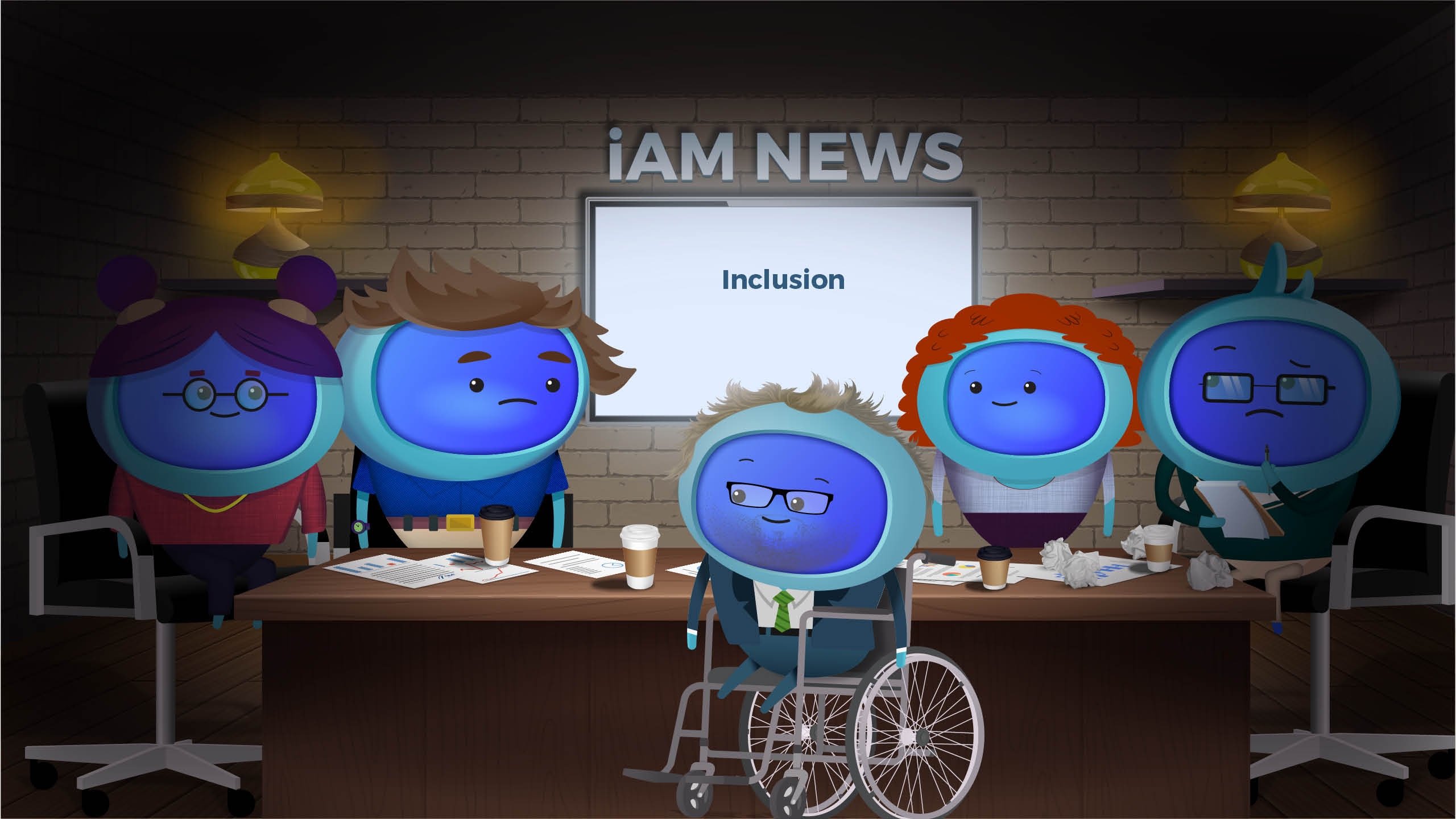People talk about Belonging, Equity, Diversity & Inclusion (BEDI) much more these days. Finally. We’re not ones for bandwagon-jumping though. As a responsible business, we absolutely support the discussion of this important topic, and we believe we can do some real good. Did you know, for example:
- More than 3 out of 4 job seekers and employees say a diverse workforce is an important factor for them when evaluating companies and job offers
- Nearly a third would not apply for a job if there were a lack of diversity in the company’s workforce
- Unfair treatment is the single largest driver of staff turnover affecting all groups, and most acutely affects underrepresented professionals
[Source: GlassDoor & Udemy Report]
Pretty startling stats, right?!
The workplace is changing for the better, so there’s never been a more critical time to ensure BEDI plays a leading role in your L&D strategy. Committing to BEDI requires more investment than a one-off initiative, it takes ongoing, intentional commitment to embed BEDI into your organisation.
So, when there’s so much else on the agenda to consider, where do you start?
How to build BEDI into your business and foster inclusivity - Our 5 Top Tips
1. Prioritise BEDI early
Inclusion starts early in areas like how you interview and how you onboard and welcome people – the key is to build it in from very beginning.
Retrofitting BEDI into ideas that have already been agreed is tricky. Instead, go to the roots of how things are done and embrace the idea that these may need to be fundamentally revised.
Some simple ideas in recruitment include anonymising CVs and using a gender bias tool when writing job descriptions. The more you start with clear intentions and go beyond words into behaviours the better.
2. Create opportunities for everyone
Look at your workplace practices and consider whether they create equal opportunities for all. In many situations, it’s a case of ‘that’s the way it’s always been done around here’ rather than reflecting on whether it’s the right way from an inclusivity point of view.
Assess the inclusivity of your meetings. If you’re always running meetings in the same way, it might be time to mix things up. For example, think about how you hold hybrid meetings? Are duties like taking minutes, running through the agenda, and leading breakout rooms rotated amongst the team rather than always falling to the most outgoing people?
Another place to look at is your recruitment process. Consider widening your talent funnel. Are you always looking to the same sources for candidates? If so, it’s unlikely the makeup of your team will change.
Employee groups are also a great way to give a voice to a more diverse range of team members. Employee Resource Groups (ERGs) are becoming more commonplace. And for good reason, they create a safe space for individuals from different identity groups to connect, share experiences and take real action on informing company policies and initiatives.
3. Develop an ongoing curriculum for BEDI training
Ensure BEDI training doesn’t fall into the ‘one-off tick box’, just for new starters. An ongoing curriculum of BEDI training will ensure it’s kept high on everyone’s radar.
Our BEDI eLearning course collection includes some key courses to help your team on their journey. Courses such as Unconscious Bias, Recognising privilege, Gender Identity in the workplace, Anti-Racism and Disability in the workplace. They are designed to encourage people to reflect on their biases, understand different perspectives and become allies to contribute to a more inclusive workplace. We’ll continue to fill out this collection with some highly requested new courses.
As part of this training, it’s also important to ensure boundaries are set around inclusion – talk about respectful language, triggers, how to disagree etc. Everyone will then know where they stand. It’s also worth having a plan of action in place for how to tackle things that threaten BEDI.
4. Review your benefits & policies
Alright, so it’s not the most exciting area, but assessing whether your benefits and policies are fair is fundamental to progressing towards an inclusive workplace.
There are countless ways to make your benefits and workplace policies more inclusive. One simple way is to allow flexible schedules and remote work options to ease the burden on parents, caregivers, and people from underrepresented backgrounds.
Mental health is a particular concern for people who feel like the only one of their identity group, and don’t experience psychological safety in the workplace, so bolstering your well-being benefits can provide additional support.
Even traditional benefits like health insurance and time off can be expanded to be more inclusive such as covering gender affirmation treatments or equitable parental leave for non-birth parents. It’s also critical to consider how you communicate benefit offerings. Look for ways to be proactive so employees don’t feel obligated to disclose personal information simply because they want to know what’s available.
5. Ensure BEDI isn’t just a ‘tick box’ exercise
Inclusion won’t just happen because your intentions are good, so you must ensure BEDI isn’t just ‘one-off’ topic in your workplace. Move from unconscious bias to conscious inclusion by building BEDI into everything. Inclusion for all should be your ultimate aim, but it won’t be achieved without an ecosystem around it to support it.
How to maintain Belonging, Equity, Diversity & Inclusion in your workplace
A key way to ensure momentum isn’t lost is to develop an inclusion strategy which is always running, not just a series of initiatives. That way it becomes woven into your company’s DNA and everyone’s day job.
“Doing anything once cannot change a corporate culture that reinforces itself day after day,” [Joan C. Williams and James D. White, Harvard Business Review]
Offering a single session of unconscious bias training, releasing a BEDI statement, or updating your company logo on social media don’t make for an inclusive workplace. To avoid viewing BEDI as a one-off activity, look for ways to commit to ongoing action and education. Look at everything from your hiring and performance management practices to your benefits, and even the way you design your products and services. That’s the way to make a genuine ongoing commitment to BEDI.
We're currently filling out our Belonging, Equity, Diversity & Inclusion eLearning course collection, which is filled with thought-provoking content and plenty of actionable advice. Take a look here.
If you'd like to chat about how you can implement BEDI content into your learning strategy, book a quick catch-up with the team who will be more than happy to help.




